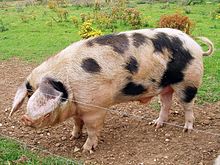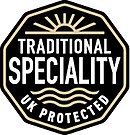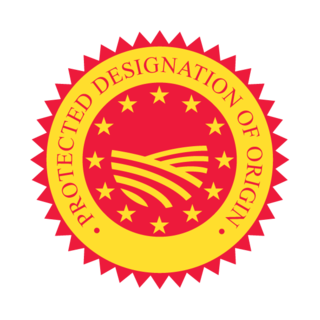

A number of United Kingdom food and drink products have been granted protected geographical status under UK law and European Union law. Protection of geographical indications is granted to names that indicate geographical origin both inside and outside the United Kingdom. A number of geographical indications for food and drink products originating in the Crown dependencies, which are not part of the UK, are also protected under the British law. These are also listed in this article.
Contents
- Legislation
- Introduction as EU member state (applicable in the UK until 2021)
- Application under UK law (applicable in England, Scotland and Wales since 2021)
- Application under EU law in the UK (applicable in Northern Ireland since 2021)
- Products with protected status
- Fresh meat (and offal)
- Meat products (cooked, salted, smoked, etc.)
- Cheeses
- Other products of animal origin (eggs, honey, various dairy products etc.)
- Fruit, vegetables and cereals fresh or processed
- Fresh fish, molluscs, and crustaceans and derivative products
- Other products (spices etc.)
- Beers
- Bread, pastry, cakes, confectionery, biscuits and other baker’s wares
- Salt
- Wool
- Wines
- Spirit drinks
- Products which formerly had protected status
- List by country
- See also
- Notes
- References and sources
- References
- Sources
- External links
The stated purpose of the quality schemes is to protect the reputation of regional products, promote traditional and agricultural activity and to eliminate non-genuine products, which may mislead consumers or be of inferior or different character; for example, producers cannot refer to their product as Scotch whisky unless it has been produced within Scotland, following particular methods. The quality schemes include two types of geographical indicators: "protected designation of origin" (PDO) (which are appellations of origin) and "protected geographical indication" (PGI) (which are geographical indications). These two types of designations are available for food, agricultural products and wines. For spirit drinks and aromatised wine, the equivalent designation to a PGI is called a "geographical indication" (GI). In addition, the quality schemes also include "traditional specialities guaranteed" (TSG), which are designed to promote and protect names of quality agricultural products and foodstuffs without requiring any reference to geographical origin. [2]
The United Kingdom and the Crown dependencies together have a total of 94 products with protected status. This is relatively few when compared with Portugal (195 protected status products), France (758) and Italy (882). However, the UK and Crown dependencies have considerably more designations than many other countries, including Ireland (11), Sweden (18) or (for example) the United States, Japan or Korea (none). [1] Most of the products hold either PGI (51 in the UK and 49 in the EU) or PDO (32 in the UK, 31 in the EU) status, with 4 products being designated as TSG.
This list, is compiled according to the eAmbrosia European Commission database and the UK 'Protected geographical food and drink names' database. They list all registered products, as well as all products which were formerly registered or for which registration has been applied.



















